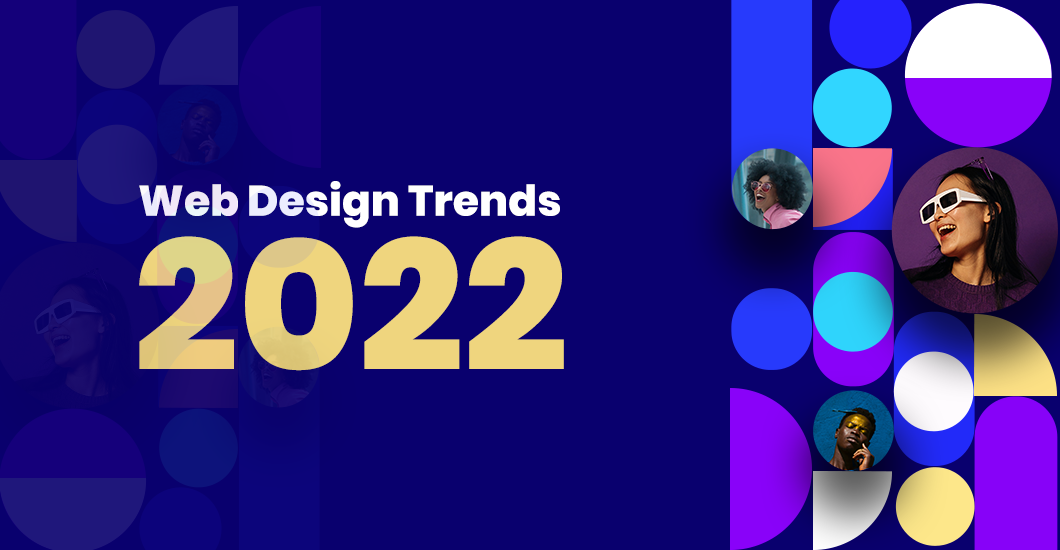A2102 Insights
Explore the latest trends and news on technology, lifestyle, and more.
Web Design Trends That Are Here to Stay and Thriving
Discover the web design trends that are reshaping the digital landscape and see which styles are here to stay!
The Future of Web Design: Key Trends That Are Shaping the Digital Landscape
The future of web design is being shaped by several key trends that prioritize user experience and accessibility. As technology evolves, designers are focusing on responsive design, ensuring that websites perform seamlessly across a variety of devices, from desktops to smartphones. This trend is complemented by the growing importance of minimalism, where clean and uncluttered layouts enhance readability and navigation. Additionally, the integration of dark mode design has gained traction, providing users with an alternative viewing experience that reduces eye strain and conserves battery life on mobile devices.
Another major influence on the future of web design is the rise of interactive content. Tools such as chatbots, quizzes, and infographics are being leveraged to engage users more deeply, creating a more immersive experience. Furthermore, the implementation of AI-driven design tools allows for personalized interface experiences based on user behavior, making websites more intuitive and user-friendly. As these trends continue to evolve, web designers must stay ahead of the curve to create innovative solutions that cater to ever-changing user expectations and technological advancements.

Understanding the Enduring Appeal of Minimalist Web Design
Understanding the Enduring Appeal of Minimalist Web Design lies in its ability to create a user-friendly experience that prioritizes content over clutter. In a world filled with distractions, minimalist web design stands out by employing a clean aesthetic that enhances readability and focus. By stripping away unnecessary elements, websites can guide users towards key information, ensuring that their journeys are not only efficient but also enjoyable. This focus on simplicity reduces cognitive load, allowing visitors to engage more deeply with the content presented.
Furthermore, minimalist web design often incorporates a responsive design approach, making it versatile across various devices and screen sizes. As more users access the web via smartphones and tablets, a minimalist layout adapts seamlessly, providing an optimal viewing experience regardless of platform. The use of whitespace, a hallmark of minimalism, not only highlights important content but also contributes to faster load times, thereby improving overall user satisfaction. This timeless appeal of minimalist web design continually resonates with both users and designers, reinforcing its relevance in an ever-evolving digital landscape.
How Responsive Design is Changing the Way We Build Websites
The emergence of responsive design has revolutionized the landscape of web development, enabling developers to create websites that offer optimal viewing experiences across a wide range of devices. This approach eliminates the need for separate mobile versions of websites, simplifying maintenance and enhancing user experience. With the increasing use of smartphones and tablets, businesses are recognizing that a responsive design is not just a trend but a necessity for reaching their audience effectively. By utilizing fluid grids, flexible images, and media queries, developers can ensure seamless usability, regardless of whether visitors are accessing sites from a desktop, laptop, or mobile device.
Moreover, responsive design influences how we prioritize content on our websites. With this fluidity, developers are encouraged to rethink their layouts, placing emphasis on essential information that resonates with users on any device. As a result, websites are becoming more intuitive and user-centric, ensuring that users receive the same high-quality experience no matter their device. This adaptation not only improves engagement and conversion rates but also aligns with search engine optimization strategies, as search engines favor websites that provide a user-friendly interface. In this digital age, embracing responsive design is pivotal for businesses aspiring to maintain a competitive edge in the online marketplace.